Reply To:
Name - Reply Comment
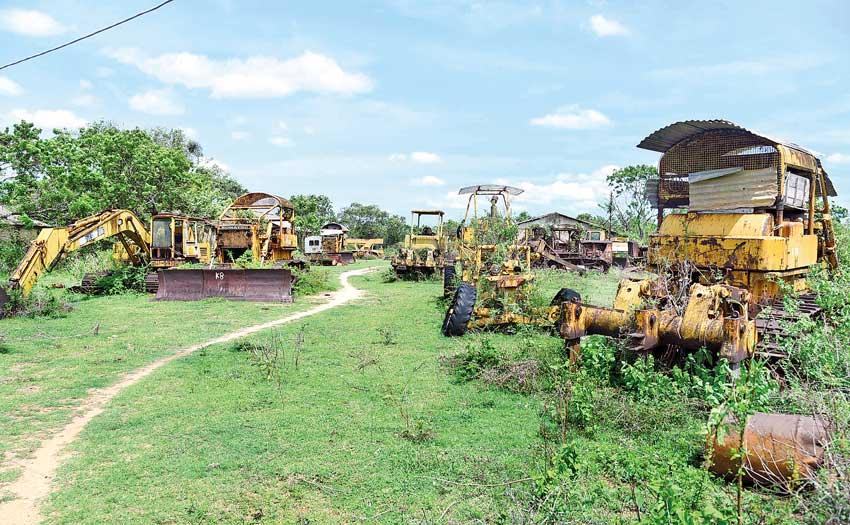
Defunct vehicles and unserviceable machinery - Pix by Samantha Perera
The Kantale Sugar Factory was a Czechoslovakian Government aid grant commissioned during Sirimavo Bandaranaike’s tenure
However, privatisation adversely affected its operations. Inefficient management and issues reported by workers, eventually led to its closure
Critics point out that the state belives it can gain more profits when sugar is imported instead of producing it in Sri Lanka
In 2018 alone, this factory was brought under the purview of four different ministries
Around 1700 permanent employees and around 5000 non-permanent employees were working at the factory prior to its closure
When the Kantale Sugar Factory was closed it had an annual production capacity of 16,320 tonnes of sugar
A 2020 Audit Report states that the factory didn’t function as expected even though it was transferred to Lanka Agencies (Pvt) Ltd
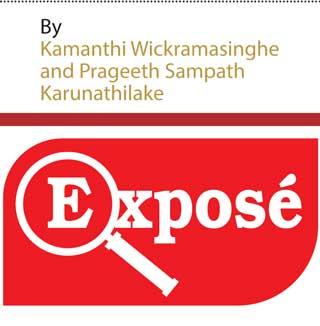 At the heart of Eastern Province lies a now abandoned ghost town punctuated with towering structures, uninhabited housing, dilapidated buildings, unserviceable machinery and acres of deserted land. 28 years ago, this place, the Sugar Factory premises at Kantale, was a hive of activity. Initially constructed on a 44,000 acre expanse of land the Kantale Sugar Factory was a Czechoslovakian Government aid grant commissioned during Sirimavo Bandaranaike’s tenure. Apart from the factory, the land was utilised to build a housing scheme, shopping complex, a club, football and volleyball courts, a dispensary, bakery and various other facilities to be enjoyed by its employees. The factory brought an era of prosperity to people in its surroundings who still recall memories of a glorious past. The once prosperous Kantale Sugar Factory therefore suffered closure by the end of 1999 after it was handed over to a private party in 1993. At present the land area has diminished to 21,300 acres and the authorities are still struggling to put the operations back on track.
At the heart of Eastern Province lies a now abandoned ghost town punctuated with towering structures, uninhabited housing, dilapidated buildings, unserviceable machinery and acres of deserted land. 28 years ago, this place, the Sugar Factory premises at Kantale, was a hive of activity. Initially constructed on a 44,000 acre expanse of land the Kantale Sugar Factory was a Czechoslovakian Government aid grant commissioned during Sirimavo Bandaranaike’s tenure. Apart from the factory, the land was utilised to build a housing scheme, shopping complex, a club, football and volleyball courts, a dispensary, bakery and various other facilities to be enjoyed by its employees. The factory brought an era of prosperity to people in its surroundings who still recall memories of a glorious past. The once prosperous Kantale Sugar Factory therefore suffered closure by the end of 1999 after it was handed over to a private party in 1993. At present the land area has diminished to 21,300 acres and the authorities are still struggling to put the operations back on track.
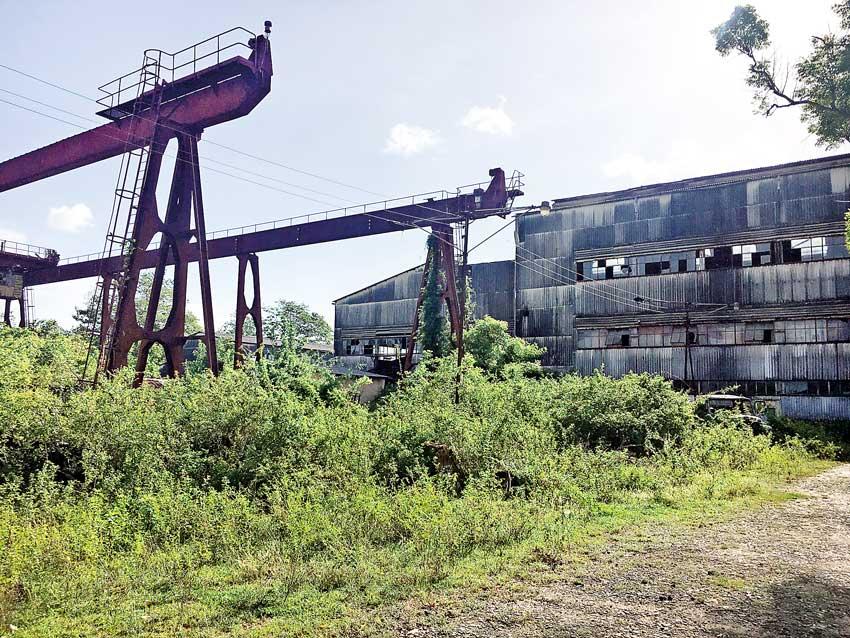
The abandoned Kantale Sugar Factory complex
A peep into the past
Kantale Sugar Industries Limited was established under the Companies Act, No.17 of 1982 and re-registered under the Companies Act, No. 07 of 2007. The objective of commencing the operation was to contribute to the production of ethanol, electricity and organic fertilizer as by-products in addition to the production of sugar by using lands owned by the sugar industries in an optimum manner, as well as encouraging sugarcane farmers and improving their economic level. Since it’s inception the factory was a profitable venture supplying quality sugar to the market for more than three decades. It is said that between 1980 to 1986, the factory earned a Rs. 70 million profit.
When Sirimavo Bandaranaike was informed about the gift Sri Lanka was about to receive, reportedly after Philip Gunawardena’s visit to Czechoslovakia, she appointed then Minister Maithripala Senanayake to identify a suitable place to construct the factory. Having travelled all the way up to Trincomalee, Senanayake and the surveyors had had a brief stop near the Kantale lake bund. Upon inspection, they demarcated 44,000 acres of land to setup the factory complex.
However, privatisation adversely affected its operations. Inefficient management and issues reported by workers, eventually led to its closure apart from destruction caused by the armed conflict. Following the privatization process, workers’ salaries and remittances like gratuity, EPF and ETF were reportedly not paid on time.

The abandoned Kantale Sugar Factory complex
As a result, the workers staged a strike against the management demanding their rights. Even though there was only one plantation zone during its inception, after 1970, the plantation area was decentralised. During the development process of the Kantale Sugar Factory and Plantation the plantation area was divided into four zones with each zone comprising eight to 17 fields; each spanning 2,000 to 3,000 acres.
It is said that around 1700 permanent employees and around 5000 non-permanent employees were working at the factory prior to its closure. Today, there are around 34 employees who continue to claim that their salaries haven’t been paid, but haven’t given up on looking after the factory complex as it was where they earned their livelihood.
When the Kantale Sugar Factory was closed it had an annual production capacity of 16,320 tonnes of sugar, 9,000 tonnes of molasses and 3.9 million litres of rectified spirits.
Production process 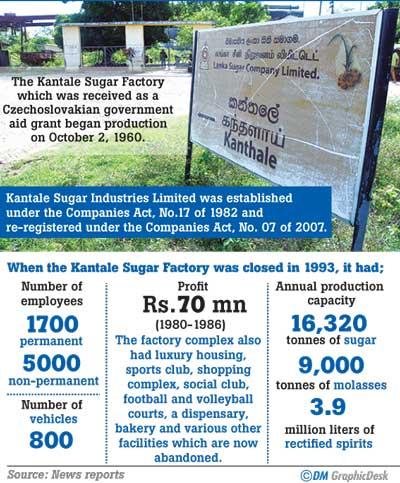
During a recent visit to the Factory premises the Daily Mirror caught a glimpse of the production facility. Sugarcane harvested from different zones was initially weighed and sent into the factory premises via a conveyor belt. The once functioning crane still stands tall amidst a wild outgrowth. The sugarcane is then processed into a juice and crystallised following a complex but efficient process. The crystals are then weighed into different quantities and put into sacks prior to being transferred to the storage facility. Factory officials claim that it would take approximately 36 hours to produce sugar using the old technology and that if a new technology is in place, the production could be done within 22 hours. Apart from sugar, several by products were also utilised for the production of ethanol, cardboard, paper, animal food and even electricity. The 2 megawatt power generator was able to provide electricity to the entire housing complex and buildings surrounding the factory; all the way up to Trincomalee.
However during a recent inspection by a team of specialists it has been observed that the white plaster coating in many of the machines is carcinogenic and some layers of iron and machinery are not up to the initial standard. Many believe that the factory could be refurbished for operations with the relevant expertise of local universities and the knowledge of previous employees. Even though it has been suggested that a new factory would be built in place of this defunct factory complex, many employees feel that it is unnecessary.
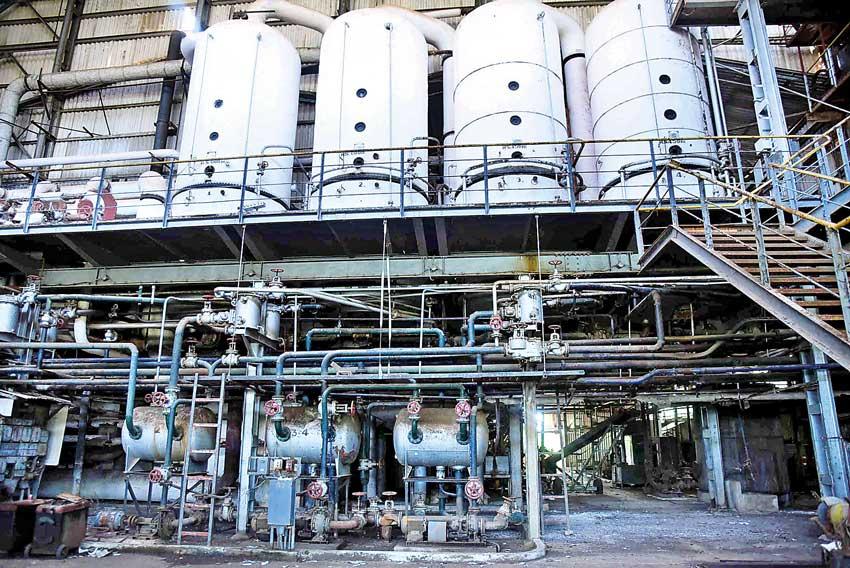
Interior of the Factory premises - the white coating on the machines were claimed to be carcinogenic
Scrap metal fiasco
|
The Foundation stone laid at the time the factory commenced operations |
A 2020 Audit Report states that the factory didn’t function as expected even though it was transferred to Lanka Agencies (Pvt) Ltd. Subsequently, the case filed by this company was settled as per the Government’s wishes back in 2003. However, thereafter, none of the governments was successful in appointing a suitable investor to recommence operations. However in 2015, the Board of Investments signed a contract with MG Sugars Lanka (Pvt) Ltd with the objective of recommending operations at the Kantale Sugar Factory. The company, a partnership between Bangalore-based Sri Prabhulingeshwar Sugar and Chemicals Ltd. and Singapore’s SLI Development Pte Ltd have agreed to invest USD 100 million inclusive of a Swiss Bank guarantee of USD 10 million.
The 30-year lease agreement was signed with the investor and as per the agreement the project would run on Build, Operate and Transfer (BOT) basis with 51% shares owned by the Government of Sri Lanka (GoSL) and 41% by the foreign investor. But the deal was done amidst various unsolved issues. As operations ceased at the Factory, from time to time, this establishment was brought under the purview of numerous ministries. Therefore, there were alleged attempts to make maximum profits out of scrap iron that were available at the Factory complex and other immovable property. In 2017 when the Factory was under the purview of the Lands Ministry, bids were called for selling machinery and other property at the factory. However it was observed that the Ministry failed to clear the defunct machinery at the property and hand over the buildings as well as release the lands to the investors. During this period several government officials were nabbed after accepting bribes and were put behind bars. The company then filed arbitration proceedings in a Singapore tribunal to stop GoSL from selling scrap metal and other machinery. Subsequently the Singapore International Arbitration Centre granted an interim order in favour of MG Sugars Lanka preventing the Lands Ministry from disposing machinery and other assets pending a final decision.
Damning verdict
|
Statement of account received by an employee which shows that they haven’t received EPF for 2018 |
The verdict of the case, filed by the Investment company in the Arbitration Centre Singapore, had been given on August 6, 2019. And as per the decision the Government of Sri Lanka (GoSL) had violated the conditions of the agreement. As such the following fines should be paid by the Government:
*The Arbitration Council had decided that the delay in the project was due to the delay caused by the GoSL and as such the project cost had been increased by 15%. However, this amount should be paid by the GoSL after the business plan is approved.
*GoSL has to pay Fifty per cent of the cost of the Arbitration case, ie Singapore Dollars 626,877 and Singapore Dollars 30,070 as cost of the hearing of interim orders to the respective company within 30 days after the court decision has been issued.
*The Arbitration Council had decided that the Sri Lanka Government should pay 95 per cent of the legal fees of the complainant ie. Singapore Dollars 237,569.83 30 days after the court verdict.
*The GoSL should pay an extra cost to the complainant for tourism and accommodation charges of USD 211,913.93
*If the government fail to pay the above money an annual interest of 5 per cent will be added
*Similarly, the Singapore Arbitration Council had decided that all infrastructure, machinery, buildings and other accessories belonging to the Kantale Sugar Factory could have been utilised by the investor at his discretion in terms of the agreement.
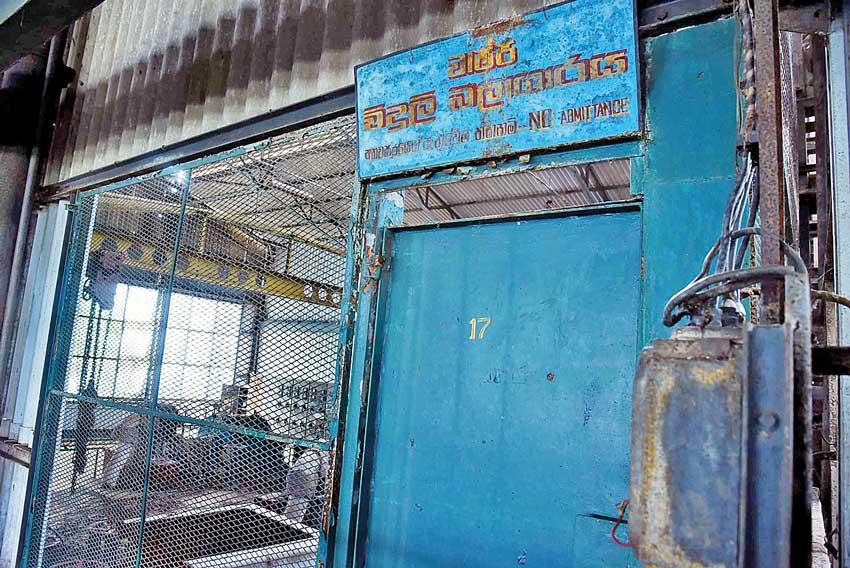 2 Megawatt Power generator
2 Megawatt Power generator
Unresolved issues exist
“We continue to work sans salaries and allowances”- Tillekaratne
To date, its employees still recall the glorious period at the factory. “I left school and joined this factory back in 1981 and joined the security division in 1989,” said H. K. N Tillekaratne. “During that period this factory was fully functioning and it was equipped with much facilities. However, when the factory closed down in 1994, they paid us a small amount as compensation and terminated services of around 236 employees. Even though the Chandrika Bandaranaike Kumaratunga Government promised to resume its operations it has remained closed for the past 28 years.
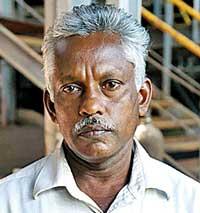
They paid us a small amount as compensation and terminated services of around 236 employees. Even though the Chandrika Bandaranaike Kumaratunga Government promised to resume its operations it has remained closed for the past 28 years
H. K. N Tillekaratne
“During the pre election period people would come with promises, but nothing has happened so far. In 2018 alone, this factory was brought under the purview of four different ministries. Right now only 34 employees are working here; employed on the basis of essential services. They retained us to safeguard the property, but only two people are currently at the security division. We didn’t receive salaries in 2018 and received Rs. 125,000 as an advance for the entire year,” he complained.
From 800 vehicles, the employees are now left with no vehicle to even travel to the nearby hospital during an emergency as the only vehicle given to them is now under repair. “But in September last year State Minister Janaka Wakkumbura visited the site, spoke to us and made promises. There’s no water for us to even drink though water is being pumped to the Army camp in the vicinity. During the one and a half year pandemic period we didn’t have any sanitation facilities. But we have to work here on 12-hour shifts,” Tillekaratne complained.
Irrespective of elephants roaming the area during the evenings or thieves who visit the site to rob pieces of machinery, the remaining employees continue to work. “Even though other government workers received their salaries we haven’t received three months salary. Others get Samurdhi benefits and other allowances, but we haven’t been receiving anything. We work here irrespective of curfew or government holidays. There are only two employees who are under 60 years of age. Our only request is to provide us with our salaries and allowances and recommence operations at the factory. Three employees passed away and one employee is in a critical condition, but none of those families has received compensation even though it is mentioned in the circular,” said Tillekaratne.
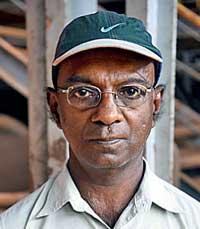
Now they are planning to put up sugar factories in other places in the country, but this place has the land and the irrigation system in place. One of the complaints is that there’s no water here. But the Kantale tank has enough water as it receives water from the Mahaweli and Moragahakanda projects
Gamini Samarasekara
“Lack of water isn’t the problem here”-Samarasekara
Going down memory lane Gamini Samarasekara, who oversees security operations at the premises, reminisced the past and described various facilities they hadenjoyed. “I joined Kantale Sugar Factory in 1988 as a security officer. We were given accommodation, water and in fact we had water supply 24/7.
There was a farm as well as a dispensary to provide medicine to anybody who fell sick. A factory with all these facilities eventually closed down. Subsequently the factory was given to a private party at a lower cost than it was valued. The value was Rs. 400 million, but it was given at a value as low as Rs. 40 million to two businessmen.
“As those two businessmen failed to continue operations this factory was subsequently closed down in 1994. The factory was closed when Chandrika Bandaranaike Kumaratunga was being elected as president and there was an opportunity back then to recommence operations. But there was no support. What I feel is that they can gain more profits when sugar is being imported than opting for a domestic production. But now they are planning to put up sugar factories in other places in the country, but this place has the land and the irrigation system in place. One of the complaints is that there’s no water here. But the Kantale tank has enough water as it receives water from the Mahaweli and Moragahakanda projects. Therefore only 30% of what is being used for farming is needed for sugarcane farming. This means sugarcane farming can be done. The land area for paddy lands will remain the same. The Prima Company has received water since 1980, but this factory was able to continue operations until 1994 from this water.

The sugarcane research Centre was shifted to Pelwatte. These units have to be re-established. There are nurseries to obtain sugarcane seeds, but the varieties of sugarcane have evolved. Perhaps the soil doesn’t support the production of sugarcane anymore
Ven. Kamburawala Rathanapala thera
“This shows that there’s no issue with regards to the supply of water and it is a political issue that has withheld operations. If they recommence operations they would be able retain the youth in these areas who have a tendency to go to other parts of the country seeking employment. There has to be a mechanism to provide employment to these youth,” he underscored.
“Several issues need to be resolved” : Ven. Kamburawala Rathanapala thera
“If the Kantale factory resumes operations this country doesn’t have to spend a lot on importing sugar,” opined Chief Incumbent of Seenipura Viharaya Ven. Kamburawala Rathanapala Thera. “But there are certain challenges. Water from the Kantale tank was utilised by the sugar factory, the Prima Company and thirdly for farming purposes. But even if the factory resumes operations this order will change. Water will first be utilised by Prima, then for farming, then for drinking and lastly to be used for the factory. The waterway will have to be reconstructed, so as to supply water to fulfill the production capacity. The sugarcane research Centre was shifted to Pelwatte. These units have to be re-established. There are nurseries to obtain sugarcane seeds, but the varieties of sugarcane have evolved. Perhaps the soil doesn’t support the production of sugarcane anymore. All these issues need to be resolved if the factory is to recommence operations.
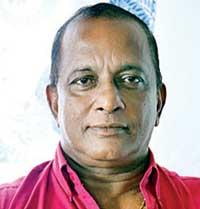
The remaining 21,000 acres will be handled as per the tripartite agreement among GoSL, farmers and the Company. We were supposed to recommence grinding sugar last year but there were various issues. We are planning to commence operations by 2022-2023
Kumara Jayawickrama Project Manager at MG Sugars Lanka (Pvt) Ltd
“The then President and Divisional Secretary were of the view that this factory will never grow sugarcane or produce sugar again. If that’s the thinking the 21,000 acres of land should be utilised for some other economically beneficial project. From the 21,000 acres, what is now remaining is only 17,000 acres as some lands have been obtained by private parties. If the soil doesn’t support sugarcane some other crop has to be introduced and I too have submitted several proposals to higher authorities,” Ven. Rathanapala added.
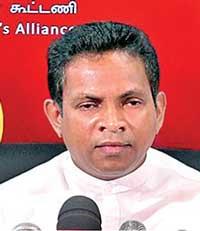
We will recommence operations as the factory is now under the purview of the state ministry
Janaka Wakkumbura State Minister of Small Plantation Crops Development
Authorities respond
“Planning to commence operations by 2022-2023” : Jayawickrama
“In 2011 we called for Expressions of Interest in 2015 an agreement was signed between GoSL and the Company,” said Kumara Jayawickrama, Project Manager at MG Sugars Lanka (Pvt) Ltd. “Then, in 2017, they allocated 500 acres for the nursery, factory and housing complex. The remaining 21,000 acres will be handled as per the tripartite agreement among GoSL, farmers and the Company. We were supposed to recommence grinding sugar last year but there were various issues. We are planning to commence operations by 2022-2023. MG Sugars Lanka Private (Ltd) is constructing a new factory for this purpose. Since 2015 there have been specialist teams visiting to take soil samples and study other features. The Moratuwa University and the Government have done a survey using drones. We will be analysing soil samples at the old factory. Around 100 acres of sugarcane has been grown using seeds and we have seeds for another 100 hectares. We plan to produce sugar, ethanol, electricity and fertilizer by 2023.” said Jayawickrama.
“A new land to be given” : Janaka Wakkumbura
Pix by Samantha Perera